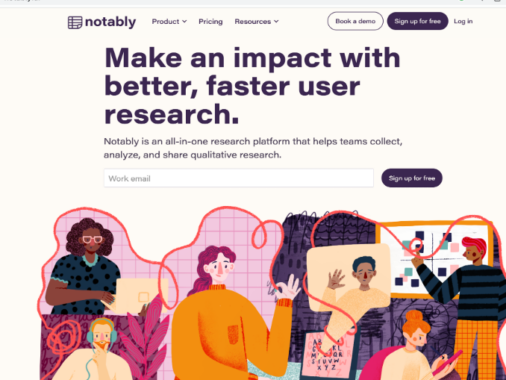
The digital revolution has been brewing for years, but the pandemic has hastened the change. According to Microsoft CEO Satya Nadella, “We’ve seen two years’ worth of digital transformation in two months.”
Changing their approach to user experience (UX) is key to a business’s ability not just to survive but thrive in the new normal.
Changes in Business due to the Pandemic

Before the pandemic, companies like Starbucks focused on innovating their in-store customer experience. Brick-and-mortar stores delivered an omnichannel shopping experience with tablet POS systems and interactive, in-store kiosks. Meanwhile, brands with business models that revolved around sharing, such as Airbnb and Uber, flourished.
However, such innovations may no longer be as useful or wanted in the pandemic environment. For instance, consumers may find the thought of using an in-store touch screen tablet or sharing a ride with strangers not just irrelevant to their needs but frightening.
Consumers now have a different view of what constitutes “essential.” Same-day delivery services offered by brands such as Amazon, Walmart, and Target were initially marketed as luxury options. Now, they’re considered a must by nearly all customers, regardless of their age, economic status, geolocation, and other demographics.
In these challenging times, customers prioritize convenience. They would willingly pay a premium for no-contact options such as click-and-collect and delivery rather than expose themselves to risk by purchasing in-store.
Business owners and stakeholders should recognize that convenience is no longer a luxury but a necessity in the current landscape. As such, they need to shift their focus away from creating in-store experiences that rely on touch and contact. Instead, their priority should be to deliver online solutions efficiently, quickly, and easily. Apart from ensuring the reliability of their supply chains and logistics, businesses should improve their websites’ UX to keep pace with their customers’ needs.
Businesses also have to contend with increased competition, with companies seeking to further capitalize on the influx of customers to online shopping channels.
Companies that were solely brick-and-mortar businesses have benefited from the increased demand for online solutions. They will do everything that they can to retain their newly acquired customers, including offering new products, establishing loyalty programs, and holding promotions. Also, customers can now quickly access price comparison and review websites to inform purchase decisions. As a result of these challenges, standing out from the competition in a cluttered e-commerce landscape is difficult to accomplish.
Meanwhile, UX designers have also been impacted by the pandemic. They have to contend with the challenges of working remotely. These include having little to no access to participants, conducting research online, and not being armed with the appropriate tools to work with members of their team. Business owners must adopt new ways to communicate and collaborate with their UX team to ensure product development goals are met.
In times of crisis, many businesses put product development on the backburner. However, they will find it in their best interests to do the opposite. The pandemic has resulted in a need for innovation—new products and services designed to make shopping, learning, and working easier. Companies must adopt the mindset that a website’s usability, usefulness, and desirability are due to how well it has been designed for UX.
The Impact of COVID-19 and Opportunities for UX
Online user behavior has shifted significantly over the last 6 months and there is an increased focus on aspects of the user’s experience.
- Customers spend approximately 48% more if their online shopping experience is personalized.
- 79% of consumers use mobile devices to shop.
- Almost 50% of consumers prefer a digital payment option to make a purchase.
- 15.8 million people created Netflix accounts in the first three months of 2020.
Online orders have grown by 146%, while the growth surge of Buy Online Pickup in Store (BOPIS) total orders rose by 563% at the Peak of COVID-19.

During the pandemic, businesses can be in one of the following stages:
- Surviving – The focus is on getting through the pandemic, ensuring continuity of service without further loss of business.
- Adapting – Businesses adjust to and capitalize on the new normal.
- Thriving – Businesses become leaders in their industries. Beyond surviving and adapting, they are growing.
Regardless of which situation a business finds itself in, its success is informed by its ability to tailor its UX strategy to account for changes caused by the coronavirus crisis. The following are UX best practices for businesses so they can address customers’ new needs and build stronger customer relationships in the new normal.
Revising the online customer journey
The customer journey comprises all of a user’s interactions to complete a goal, whether it’s purchasing a product or paying for a service. It encompasses all channels and devices used in the process and can consist of multiple interactions.
At a time where most customer journeys begin and end online, businesses should focus on creating a seamless transition across all digital touchpoints. Customers may use more than one device and visit more than one channel before making a purchase. For this reason, websites must be optimized for both desktop and mobile, and messaging must be consistent throughout. Brands and retailers must exert more effort to guide their customers’ online purchasing decisions and find ways to retain customers through loyalty and rewards programs.
Seamless UX helps simplify customers’ interactions with a business, reducing the time and effort required to get customers from the research stage to the purchasing stage. It also allows businesses to meet their customers’ needs as quickly as possible. Appealing and useful UX features at all points of the customers’ journey across all devices remove pain points and improve their overall purchasing experience.
Focus on universal access
The key to excellent user experience is convenience, simplified access, and ease of use. Businesses should redesign their e-commerce websites with this in mind and periodically conduct UX audits to identify potential usability issues.
At the minimum, businesses should limit downtime in delivering services, optimize page loading time on e-commerce websites, and design a smooth checkout process. They should also implement UX features that make shopping easier not just for the digital-savvy but also for newcomers to e-commerce and those who require accessibility features. These include users who are elderly and those who have special needs.
Companies that do not optimize their websites for users with special needs stand to lose their business. According to a study by Mintel, older adults are likely to drive e-commerce growth in the short- and medium-term. Meanwhile, the annual discretionary spending of Americans with disabilities amounts to more than $200 billion.
Let user feedback inform quarantine UX design decisions

Dulux, the international paint brand, struggled with paint sales. Most customers wanted to be able to see what a paint color would look like on their walls before committing to a purchase. The company hired Webcredible, an independent design team, to develop a solution. Through journey mapping, testing, and research, they created an app that allowed customers to test out paint colors on their walls using augmented reality. The results are impressive: a 65% increase in tester paint sales and a 92% increase in stockiest searches.
UX testing data provides businesses with actionable insights. These help them create a digital experience strategy that users find rewarding and companies find useful in boosting their bottom line.
Utilize AI for enhanced personalization and a more tailored customer experience
Consumers prefer personalized digital experiences. In a study by Accenture, approximately 83% of respondents said that they were willing to have trusted brands track their data in exchange for relevant recommendations, targeted offers, and other hallmarks of a personalized shopping experience.
AI can be used to enable greater personalization as it makes tailoring experiences and curating content for each individual easier and faster. AI personalization categorizes different customer data sets, from which valuable insights are extracted. The data is then run through an automation engine that can perform actions without the need for human interaction. Also, by using information gleaned from customer interaction, businesses can make the appropriate improvements to their websites, products, and services.
Integrating a conversational AI chatbot into the messaging services of channels where customers seek the most assistance allows businesses to deliver personalized information and support 24/7. Apart from monitoring consumer data, gathering insights, and providing custom solutions, chatbots ensure a continued presence on digital channels and ensure no lead is left unfollowed.
Playing the Long Game: Quarantine UX for the New Normal

The COVID-19 pandemic continues to have a significant impact on everything from consumer behavior to business operations. The threat to lives and livelihood has created a climate of uncertainty, forcing businesses to make tough choices in order to survive and adapt.
While it’s vital to put short-term strategies in place, it is evident that the changes to how people work, learn, shop, and use technology will last long after the pandemic is over. As such, when considering the adoption of new strategies, businesses should determine whether these strategies support long-term goals.
At the same time, they should be open to innovations and employ out-of-the-box thinking to reach short-term objectives. Little wins can be big steps toward achieving success during and after the crisis.
Because of the pandemic, convenience is no longer a luxury—it’s now a necessity. Once the territory of e-commerce giants, services like contactless purchasing and shipping/delivery are now expected from businesses of all sizes and industries. Consumers are working, studying, learning, and shipping mostly online and will likely continue doing so, even after a vaccine is developed and it is considered “safe” to go outside.
Staying on top of consumer trends is a must for businesses that wish to weather the storm. Companies that are agile, invest in improving UX, and align their UX strategy toward consumers’ new needs and behaviors will go beyond adapting to the current crisis. They are more likely to thrive, capture a larger share of the market, and emerge as leaders during and after the pandemic.
![]()


